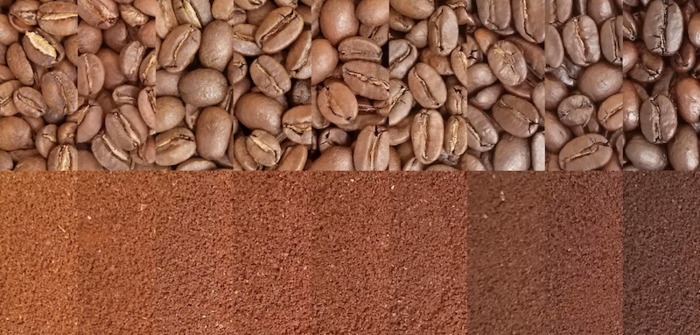
Waiting on the heat sealer before assembling my prototype of the Roasting Styles Exploration Kit. It includes a half pound each of three different approaches to roasting a single coffee along with an 8 page write up with technical details on each batch and how those were derived from the initial exploratory roast.
It's a nice enough example that I'm considering possibly writing up a little booklet and doing a gift pack: maybe half a pound from each roast and optionally a couple pounds of the green so that home roasters can try the coffees, read the info, and either try to replicate their favorite or improve on the results for their own preferences.
The point of this is that all of these are roasts that different companies might reasonably choose to sell depending on how they see this coffee fitting into their product line and the same methodology can be applied to get to each of these very different results.
Exterior degree of roast has about 10 points between the different roasts (53.5/43.5/32.7), interior colors are similar except there's a much wider spread on the light roast (64.8/46.9/33.3).
The light roast does the whole consistently (though slightly) declining rate of temperature change throughout and there's a pleasant acidity to the coffee. More of a juicy sweetness than a candy sweetness.
For the medium roast (4°F hotter than start of 2nd crack for end temperature), I really stretched time while the coffee is yellow to push the sweetness and the result is that even just smelling the brewed coffee you might think someone added honey to it. The rate of temperature change consistently and slightly increases throughout the roast and the result is nicely balanced.
The dark roast uses a traditional S curve, often a good place to start for dark roasts as it hits the balance of producing flavors that only develop at darker roasts without completely destroying the pleasant flavors developed earlier in the roast. Especially as the coffee cools it's a medium-heavy bodied coffee with good sweetness and clove spice. A bit of smokiness on the first sip that diminishes as the coffee cools.
To use as an example in the book, I took the latest coffee from Sulawesi which so impressed me during the initial exploratory roast and developed roasting plans not only for the dark roast version that I intend to sell, but also a medium and light roast version so I could write about the process from those different perspectives with the same coffee.
Next release of Mastodon will allow admins to post important announcements to their users, and yes, those are reactions
- Software
- https://typica.us
- Send Money
- https://typica.us/payment.html
Author of Typica software for coffee roasters.
